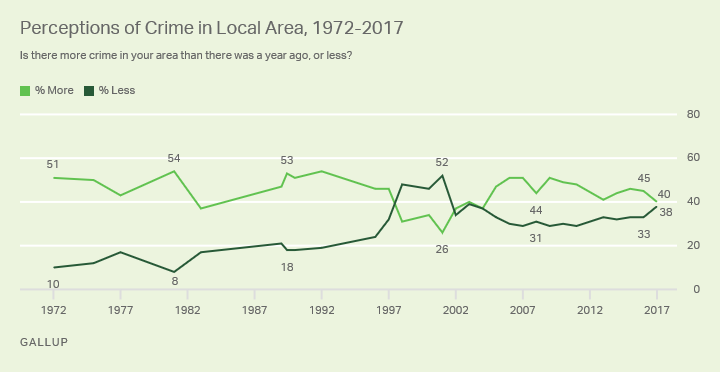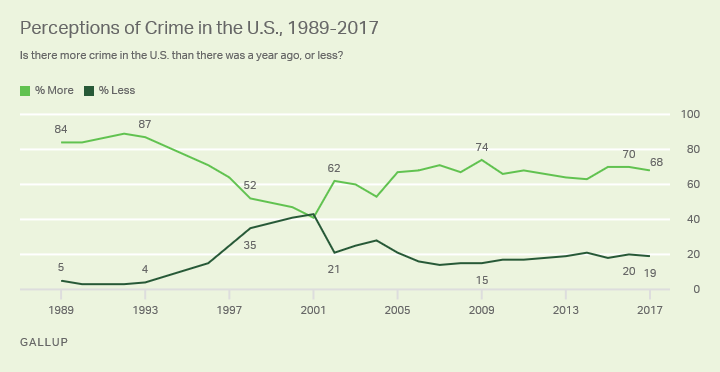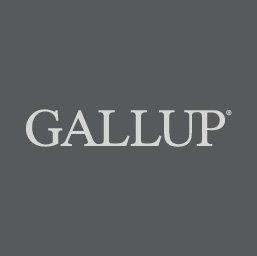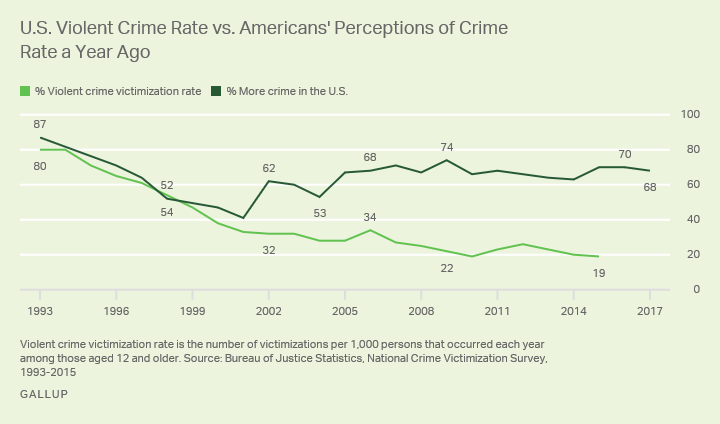Story Highlights
- 38% say there is less crime in their local area; 40% say more
- 68% say there is more crime in the U.S., unchanged since 2015
WASHINGTON, D.C. -- Americans' perceptions of crime in their local area have improved since last year. The percentage of U.S. adults saying there is less crime in their local area has risen by five percentage points; those saying there is more crime has fallen by the same amount.

These results are based on Gallup's annual Crime poll, conducted Oct. 5-11. Since 1972, Gallup has regularly asked the public to assess crime in the area where they live. Americans were most positive one month after 9/11, when 52% said crime had decreased locally in the past year. That optimism about crime was not long-lived, however -- by 2002, Americans had returned to their historical pattern of being more negative than positive about crime in their area. The current 38% "less crime" reading is the highest since 2004 and significantly better than the first 20 years of Gallup's trend.
Consistent with past findings, women (including a majority of those younger than 50, at 52%) are most likely to say there is more crime this year in their local area. This compares with 33% of men in the same age group. Assuming that men and women generally live in the same areas across the country, these gender differences appear to reflect underlying sensitivity to the issue.
Those with an annual household income of less than $30,000 are significantly more likely than those making $75,000 or more to report an increase in crime in their area (49% vs. 35%, respectively).
Perceptions of Crime in the U.S. Remain High
A clear majority of Americans (68%) say crime is on the rise in the U.S., essentially unchanged from 70% last year. This level of pessimism is not unusual. Since Gallup began measuring public views of crime nationwide in 1989, Americans have consistently viewed it much more negatively than the situation in their own area. Each year -- except in 2000 and 2001 -- Gallup has found a majority of Americans saying there is more crime nationwide than the previous year. The highest reading of 89% came in 1992.

Among the groups most likely to say U.S. crime has increased since last year are women (76%), nonwhites (75%) and those with household incomes under $30,000 (77%). While perceptions have varied by political partisanship throughout the years, there is no difference between Republicans and Democrats this year -- 66% of each say there is more crime nationally. During Barack Obama's presidency, Republicans were more likely than Democrats to say crime was up. The opposite was true during most of George W. Bush's presidency.


